
International Journal of Pavement Engineering
Scope & Guideline
Transforming pavement challenges into engineering solutions.
Introduction
Aims and Scopes
- Pavement Materials and Modifications:
Research on innovative materials such as modified asphalt, polymer blends, recycled materials, and nanomaterials to improve the performance and sustainability of pavements. - Pavement Performance and Durability:
Studies assessing the long-term performance, durability, and life-cycle analysis of various pavement types under different environmental conditions and traffic loads. - Pavement Design and Analysis:
Development of mechanistic-empirical design methods, predictive models, and optimization strategies for pavement structures to enhance their performance and reduce maintenance costs. - Non-Destructive Testing and Evaluation:
Research involving non-destructive techniques for evaluating pavement conditions, including the use of ground-penetrating radar (GPR), laser scanning, and other advanced sensing technologies. - Sustainability and Environmental Impact:
Exploration of sustainable practices in pavement engineering, including the use of recycled materials, life-cycle assessments, and environmental impact evaluations. - Traffic Interaction and Load Response:
Analysis of the interaction between pavement structures and vehicular loads, including studies on load distribution, rutting, and fatigue behavior. - Innovative Construction Techniques:
Investigation of new construction methods and technologies, such as warm mix asphalt, cold in-place recycling, and 3D printing applications in pavement engineering.
Trending and Emerging
- Smart Pavement Technologies:
There is an increasing focus on the integration of smart technologies into pavement systems, including sensor networks and data analytics for real-time monitoring and management. - Sustainable and Green Pavement Solutions:
Research on environmentally friendly materials and methods, such as the use of recycled materials and bio-based additives, is gaining momentum as sustainability becomes a critical concern. - Advanced Computational Modelling:
Emerging techniques in computational modeling, including machine learning and artificial intelligence, are being utilized to predict pavement performance and optimize design processes. - Resilience and Climate Adaptation:
Studies addressing the resilience of pavement systems to climate change effects, such as extreme weather conditions and flooding, are becoming more prominent. - Microstructural Analysis:
There is a growing emphasis on understanding the microstructural characteristics of pavement materials through advanced imaging and analytical techniques to enhance performance predictions. - Pavement Recycling and Circular Economy:
Research on recycling technologies, particularly for asphalt and concrete pavements, is trending as part of a broader move towards circular economy practices in construction.
Declining or Waning
- Traditional Asphalt Mix Design:
Research focused on conventional asphalt mix design methodologies has diminished as newer, more innovative approaches and materials gain traction in the field. - Basic Pavement Maintenance Strategies:
Studies centered on basic maintenance practices are becoming less prevalent as the emphasis shifts toward advanced predictive maintenance and performance-based approaches. - Standardized Testing Methods:
The exploration of traditional standardized testing methods for pavement materials is waning, with a growing preference for more advanced and context-specific evaluation techniques. - Historical Pavement Performance Studies:
Research focusing solely on historical performance data without integrating modern analytical or predictive models is witnessing a decline, as the field moves towards more dynamic and real-time assessments.
Similar Journals
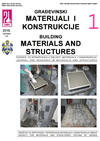
Gradevnski Materijiali I Konstrukcije-Building Materials and Structures
Unleashing potential in structural engineering and material science.Gradevnski Materijiali I Konstrukcije - Building Materials and Structures is a premier open-access journal dedicated to advancing the field of construction materials and structural engineering. Published by SOC MATERIALS & STRUCTURES TESTING SERBIA, this journal provides a platform for researchers, professionals, and students to share their innovative findings and developments in building materials. With a commitment to open-access since 2012, it fosters unrestricted availability of research for a wider audience, encouraging collaboration and knowledge dissemination. The journal features a diverse range of topics, including material testing, structural integrity, and sustainable construction practices, making it a vital resource for those engaged in the design and analysis of structural components. By fostering the advancement of research and practice in this crucial sector, Gradevnski Materijiali I Konstrukcije plays an essential role in shaping the future of construction and material science.

Roads and Bridges-Drogi i Mosty
Connecting Ideas, Constructing SolutionsRoads and Bridges-Drogi i Mosty, published by the Road & Bridge Research Institute, serves as a vital platform for the dissemination of knowledge in the fields of civil engineering and construction. With an ISSN of 1643-1618 and an E-ISSN of 2449-769X, this journal has been contributing to the academic community from 2005 to 2024. Although currently classified in the Q4 quartile for Building and Construction and Civil and Structural Engineering, the journal is dedicated to showcasing high-quality research and innovative solutions in infrastructure development and maintenance. The journal operates under a non-open access model, thus emphasizing the importance of rigorous peer review and academic integrity. Researchers, professionals, and students interested in the progress of roads, bridges, and overall infrastructure will find this publication an essential resource to stay informed on current trends and advancements in the industry.

Revista Ingenieria de Construccion
Innovating Building Practices for a Sustainable FutureRevista Ingenieria de Construccion is a prominent open-access journal dedicated to advancing knowledge and practice in the fields of building and construction engineering, as well as civil and structural engineering. Published by the Pontificia Universidad Católica de Chile, specifically the Department of Engineering and Construction Management, this journal has been providing free access to quality research outputs since 1986, ensuring that vital information is available to both practitioners and academics globally. With its current placement in the Q4 category of both the Building and Construction and Civil and Structural Engineering quartiles, it serves as a platform for innovative studies and critical discussions, positioning itself strategically within the academic landscape. The journal is indexed in Scopus, ranking #157 in Building and Construction and #291 in Civil and Structural Engineering, reflecting the growing impact and relevance of its contributions. Researchers, professionals, and students are encouraged to engage with the rigorous and diverse content published within its pages, fostering a vibrant academic and practical discourse.

Structural Concrete
Transforming Construction Practices Through ResearchStructural Concrete, published by ERNST & SOHN, is a premier journal dedicated to the field of Civil and Structural Engineering, focusing on innovative research and advancements in concrete materials and technologies. With an impressive impact factor and a consistent ranking in the Q1 category of both Building and Construction and Civil and Structural Engineering, the journal stands as a vital resource for researchers, professionals, and students alike. It is indexed with notable Scopus ranks, underscoring its significance within the academic community. The journal spans a comprehensive scope (from 2001 to the present) that encompasses diverse topics related to the behavior, design, and application of structural concrete. Although not an open access publication, it offers valuable insights and cutting-edge knowledge that contribute to the ongoing evolution of construction practices and materials science. Structural Concrete is an essential platform for sharing pioneering findings and fostering collaboration within this dynamic field.

Revista de la Construccion
Exploring Cutting-Edge Solutions in Construction EngineeringRevista de la Construcción is a pivotal academic journal dedicated to the field of civil engineering and construction, published by the prestigious Pontificia Universidad Católica de Chile, Escuela de Construcción Civil. With its ISSN 0718-915X, this journal serves as a crucial platform for disseminating innovative research, case studies, and advancements in construction methodologies that address contemporary challenges within the industry. While currently not classified as open access, it provides valuable insights benefiting researchers, professionals, and students engaged in construction development and sustainability. The journal enhances the academic discourse and contributes significantly to knowledge in engineering practices, project management, and material science. Based in Santiago, Chile, the journal aims to foster collaboration and knowledge exchange among experts both locally and globally, making it an essential resource for those striving to advance the science and practice of construction.
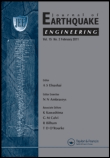
JOURNAL OF EARTHQUAKE ENGINEERING
Elevating standards in earthquake engineering research.JOURNAL OF EARTHQUAKE ENGINEERING, published by TAYLOR & FRANCIS LTD, stands as a pivotal resource in the fields of Building and Construction, Civil and Structural Engineering, and Geotechnical Engineering. With an impressive Q1 ranking in multiple categories for 2023, this journal is instrumental for researchers, professionals, and students committed to advancing knowledge in earthquake engineering and its practical applications. As a platform that spans the years from 1997 to 2024, it highlights significant contributions to safety, risk, reliability, and quality in engineering practices. While the journal operates on a subscription basis, its highly regarded articles, bolstered by robust Scopus rankings—such as rank #46 in Building and Construction—underscore its credibility and influence in shaping standards and methodologies within the discipline. Promoting innovative and evidence-based approaches, the JOURNAL OF EARTHQUAKE ENGINEERING is essential reading for anyone engaged in the science and technology of earthquake-resistant structures.
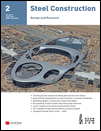
Steel Construction-Design and Research
Leading the Way in Steel Construction AdvancementsSteel Construction-Design and Research is a premier journal published by ERNST & SOHN, focusing on the latest advancements and research within the field of steel construction and structural engineering. With an ISSN of 1867-0520 and E-ISSN 1867-0539, this journal serves as a vital resource for engineers, researchers, and academics committed to enhancing the design and performance of steel structures. Located in the United States, its reputation is bolstered by its impressive standing in various Scopus categories; it ranks in the Q2 quartile for Building and Construction, Civil and Structural Engineering, Mechanics of Materials, and Metals and Alloys as of 2023. This journal is particularly significant as it captures high-quality research spanning critical years from 2011 to 2012 and 2014 to 2024, fetching valuable insights into the evolving methodologies and applications in steel construction. Although it does not operate under an Open Access model, its rigorous peer-review process ensures that contributors deliver top-tier research, making it an essential publication for anyone engaged in the field.
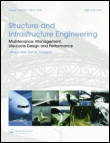
Structure and Infrastructure Engineering
Transforming Challenges into Engineering TriumphsStructure and Infrastructure Engineering, published by TAYLOR & FRANCIS LTD, is a premier academic journal that serves as a vital resource in the fields of engineering and construction. Featuring an ISSN of 1573-2479 and an E-ISSN of 1744-8980, this journal has established its reputation as a leader in disseminating high-quality research. Since its inception, it has successfully transitioned through converged years from 2007 to 2024, earning a prestigious position within the Q1 quartile across multiple engineering disciplines, including Building and Construction, Civil and Structural Engineering, and Ocean Engineering, among others. Its impact is underscored by impressive Scopus rankings, particularly its 5th rank in Ocean Engineering within the top 95th percentile. The journal’s commitment to advancing knowledge in safety, risk, reliability, and quality makes it an indispensable platform for researchers, professionals, and students aiming to stay at the forefront of engineering innovations. Access to its comprehensive articles allows for a deeper understanding of contemporary challenges and solutions in infrastructure development.
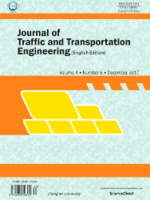
Journal of Traffic and Transportation Engineering-English Edition
Advancing the Frontiers of Traffic and Transportation Engineering.Journal of Traffic and Transportation Engineering-English Edition, published by KEAI PUBLISHING LTD, is a leading open-access journal that has been disseminating valuable research in the realms of civil and structural engineering, as well as transportation studies since 2014. With a robust impact factor reflected by its prestigious Q1 rankings in both Civil and Structural Engineering and Transportation, this journal stands at the forefront of innovation and scholarship, featuring contributions from experts across the globe. The journal is particularly noted for its practical and theoretical advancements in traffic and transportation engineering, making it indispensable for researchers, industry professionals, and students aiming to deepen their understanding of these critical fields. Dedicated to providing a platform for high-quality interdisciplinary research, the Journal of Traffic and Transportation Engineering embraces the principles of open access, ensuring that all published articles are freely available to foster knowledge sharing and collaboration within the community. With its headquarters located in Beijing, China, the journal continues to push boundaries and set new standards in the field of traffic and transportation research.

Transportation Infrastructure Geotechnology
Connecting Geotechnical Science with Infrastructure Development.Transportation Infrastructure Geotechnology, an esteemed journal published by SpringerNature, serves as a vital platform in the fields of Civil and Structural Engineering, Environmental Engineering, Geotechnical Engineering, and Transportation. Established in 2014 and spanning a decade of significant scientific discourse, this journal has gained recognition for its robust contribution to the understanding of the interplay between geotechnical processes and transportation infrastructure. With an impactful Q2 ranking in multiple categories—including Civil and Structural Engineering and Environmental Engineering—it emphasizes innovative research and practical applications globally. Researchers and professionals can explore critical topics that influence infrastructure sustainability, safety, and efficiency. Although it operates under a subscription model, its affiliation with SpringerNature ensures rigorous peer-review and high-quality publications, making it an indispensable resource for academics and industry experts alike.